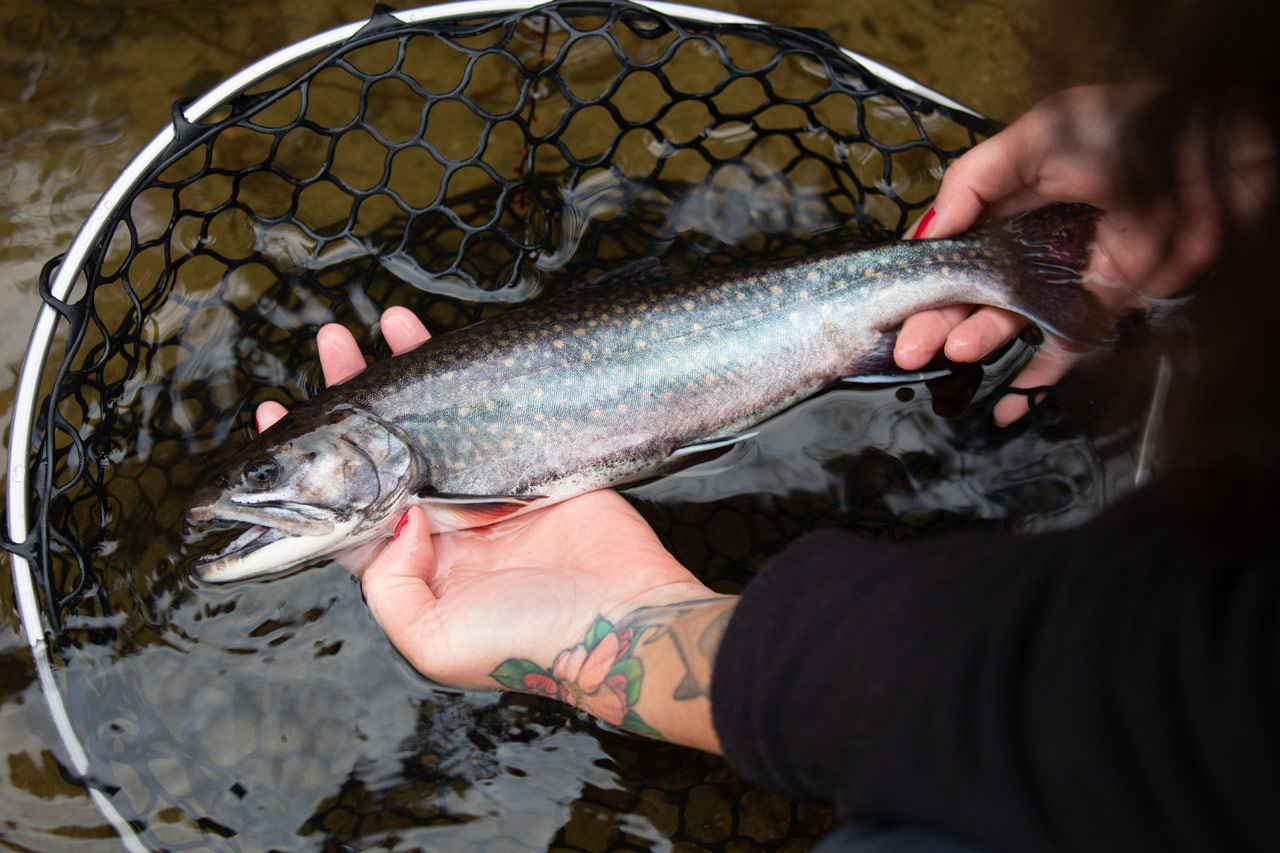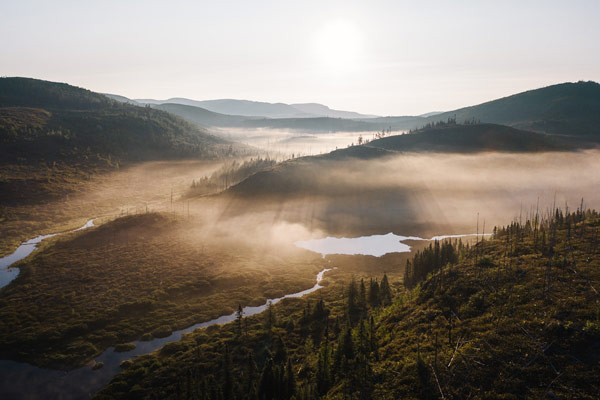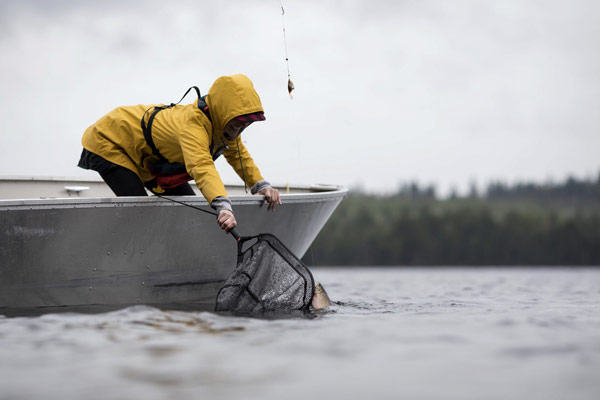Fishing in national parks
Conservation where you're the hero
An article inspired by the 2020 edition of In Our Nature (in French only).
They're biting in the national parks! But to ensure that sport fishing can continue for a long time to come, the waterways are carefully monitored and measures are taken to ensure healthy fish populations.
Without even knowing it, fishing enthusiasts contribute to sound waterway management by harvesting fish in the national parks. How so? By methodically reporting their catches and complying with established limits. And why is that? Keep on reading and you'll find out.
Reporting your catches
The basis of sound resource management
Why stop fishing when they keep biting? Among other things, to be able to continue fishing over the years ahead.
Indeed, anglers’ catch reports provide essential data for monitoring the evolution of the fishery and ensuring that a species is not overexploited. Most notably, these reports make it possible to suspend fishing on a waterway when the maximum catch limit (in kilograms or number of individuals) is reached.
Anglers are the basis for sound fishing management in the parks. They're the ones who provide the information. Without them, we can’t ensure proper population management. If people report their fishing haphazardly, for the wrong lake, or not at all, this could lead to harvesting beyond what the environment can produce or replace - Stéphanie Gagné, biologist at the Ministère des Forêts, de la Faune et des Parcs (MFFP)
So failure to report catches has direct consequences on the fish population and possibly on sport fishing as well. Imposing limits helps to ensure fishing quality in the long term. That’s why less is more…even when fishing!
Respecting catch limits
Understanding them better
Annual catch limit management plays a fundamental role in ensuring sustainable fishing in the parks. Limits are set according to the productivity of the environment and the population's renewal capacity. Ms. Gagné, a biologist, explains this logic by comparing it to the management of a savings account:
The key is to take (i.e. fish) the “money” earned in interest on the invested amount, without depleting its capital (population base). If too many large fish of a species are caught, especially breeding females, it will decrease the population's capacity to renew itself (the interest rate). And in that case, if we continue to fish at the same rate, we'll be drawing on our capital, and the quality of fishing will decrease. The catches will be increasingly smaller and less abundant. - Stéphanie Gagné, biologist at the MFFP
Let's bet that all these steps will enable future generations to tell better fishing stories!
More projects
In Our Nature
As true guardians of the flora and fauna of the province's most beautiful landscapes, our conservation specialists are always on the go! Are you curious to learn more about the extent of the work that has been done in the field? Check out the brand new version of their annual publication: In Our Nature (in French only). Have fun finding out!


